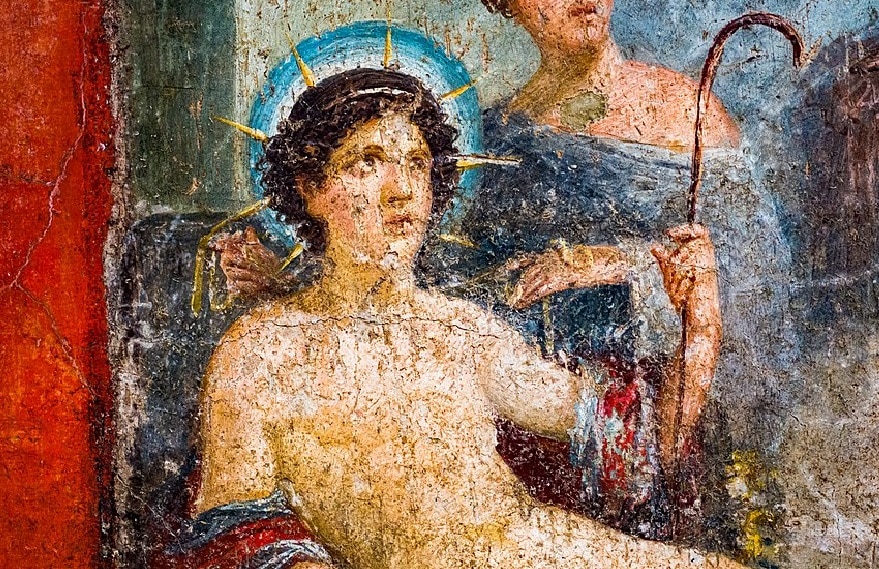
Table of Contents
In Greek mythology, Helios was the personification of the Sun and one of the strongest Titan gods. He is often portrayed as a handsome young man driving a chariot with four horses across the sky from the east to the west. Known as ‘the sun god’, Helios was also the god of sight and the guardian of oaths.
Helios didn’t play a major role in Greek mythology since he was gradually replaced by Apollo after the Olympian gods took over from the Titans. However, he does appear as a side character in the myths of mortals and other gods.
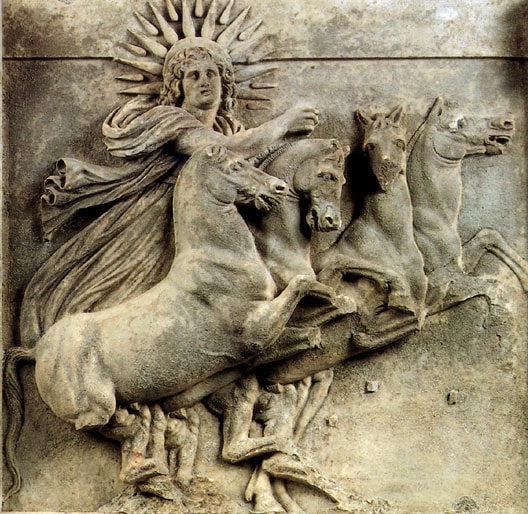
Who was Helios?
Helios was born to Theia, the goddess of sight and Hyperion, the Titan god of light. He was the brother of Eos, the goddess of the dawn, and Selene, goddess of the moon. Helios is described as a handsome god with bright, curly hair and piercing eyes.
Symbols of Helios
Helios’ most popular symbol is his chariot. Drawn by several horses, Helios rides the golden Sun Chariot each day, crossing the sky from East to West which is symbolic of the sun’s journey.
Another popular symbol of Helios is the horse, the animal that pulls the chariot across the sky. Helios has four horses – Aethon (Blazing), Aeos (He who turns the sky), Phlegon (Burning) and Pyrois (Fiery One).
Helios is also represented by aureoles, which refers to the rays of light often drawn around the heads of certain deities.
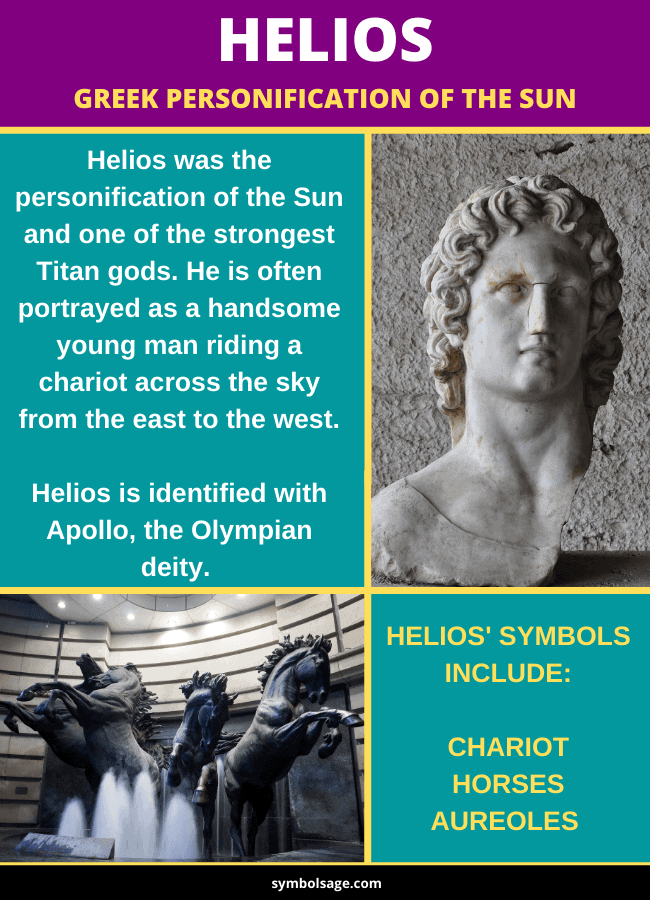
Helios’ Lovers and Children
Helios was married to the Oceanid Perse, but had several mistresses. Other sources say that he didn’t necessarily have a wife but had many lovers instead. Some of the most well-known women associated with Helios include:
- Perse – Helios and Perse were married and had around four children.
- Clymene – One of Helios’ mistresses, Clymen bore him several children, including Phaethon and the Heliades.
- Clytie – A consort of Helios’ who eventually lost his love and died from sorrow. She eventually turned into the heliotrope, a flower which follows the journey of the sun during the day.
- Rhode – The nymph of the island of Rhodes, Rhode bore Helios seven sons and a daughter.
Helios had several children, including:
- Lampetia – The goddess of light.
- Phaethusa – The personification of the blinding rays of the sun.
- Aeetes – A Colchis king through whom Helios became the grandfather to Medea, the sorceress.
- Perses – Who was slain by his paternal niece, Medea.
- Circe – A sorceress who could use incantations and drugs to change humans into lions, swine and wolves.
- Pasiphae – The wife of King Minos and mother of the Minotaur.
- Phaethon – Known for trying to ride Helios’ chariot and dying in the process. Arguably the most famous child of Helios.
Myths Featuring Helios
Helios doesn’t play a central role in many myths, but makes frequent appearances as a side character in the story of others. Here are some popular myths featuring Helios.
1. The Cattle of Helios
Odysseus and his men were cast ashore on the island, Thrinacia. Helios had a large herd of cattle and he had forbidden anyone to touch them. However, Odysseus’ men didn’t take the warning seriously and while Odysseus was asleep, they captured a few of the cows and roasted the meat. Helios was greatly angered by this and went to Zeus to ask for vengeance.
When Odysseus and his men were leaving the island, a thunderbolt struck their ship, destroying it beyond repair. All Odysseus’ men perished, with only Odysseus surviving the event. He was spared as he had been the only one who hadn’t disobeyed Helios, since he had been fast asleep when his men hunted the cattle.
2. Helios and Heracles
As the Greek hero Heracles was crossing the desert to steal the cattle of the monster Geryon, as one of his Twelve Labors, he found Helios’ heat difficult to bear. Annoyed, he began to shoot arrows at Helios, who promised to help him if he would stop it. Heracles complied and the sun god gave him a golden cup which would help him to cross water on the way to the cattle. Heracless used the golden cup to sail across the seas.
3. Helios and Poseidon
Helios was a competitive god as were most of the gods of the Greeek pantheon. In one instance, he is said to have sought the sacrifices of Corinth. However, he had to compete for this against Poseidon, god of the sea.
The competition between Helios and Poseidon for the sacrifices of Corinth was so fierce and violent that Briareus, the mediator, decided that the acropolis of the city of Corinth would be given to Helios and the Isthmus would be for Poseidon.
4. Phaethon and the Unbreakable Oath
The story of Helios’ son Phaethon is probably one of the best known myths involving the sun god. Phaethon grew up always unsure that he was actually Helios’ son. He would search for assurances that Helios was his father and nothing his mother could say would reassure him. So Phaethon confronted Helios, seeking the assurance he needed.
Helios swore an unbreakable oath, promising to give Phaethon whatever it was that he wanted and Phaethon requested to be given the opportunity to guide his father’s chariot for a day. Helios realized that it would be folly to allow such a thing but since he had taken an oath, he couldn’t go back on his word. So, he put Phaethon in charge of his chariot.
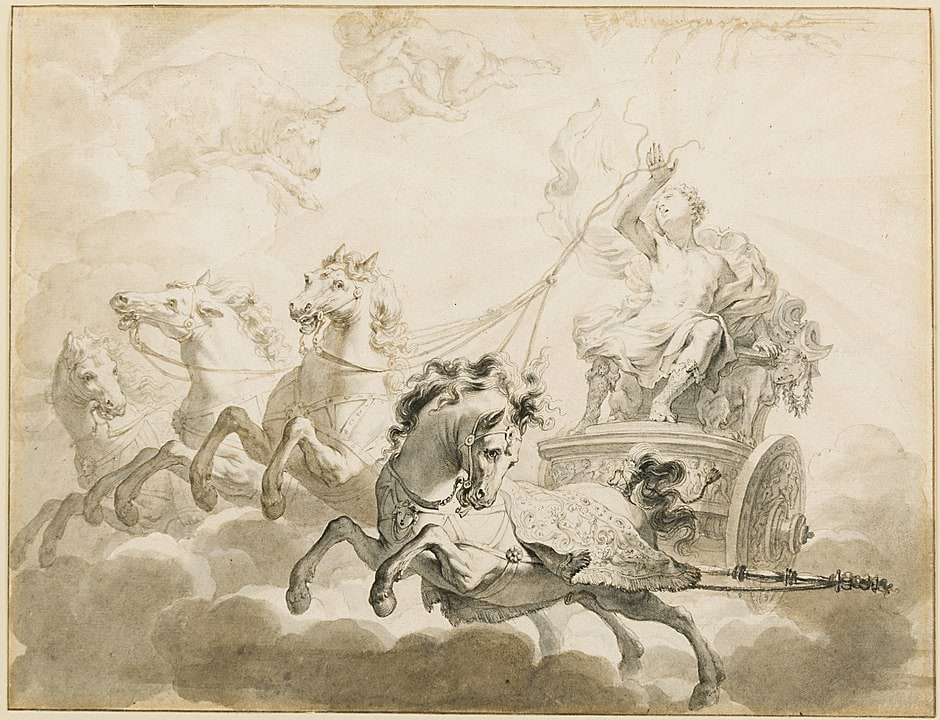
Phaethon, however, couldn’t control the chariot like his father could. When it flew too close to the ground, it scorched the earth and when it flew too high, it caused some regions of the earth to freeze.
Zeus saw what was happening and decided he had to intervene or the world would be destroyed. He sent a thunderbolt, which killed Phaethon. Helios was devastated and blamed himself for what had happened. It took a great deal of cajoling from the gods to make him remount his chariot and continue his daily journey across the skies.
Helios vs. Apollo
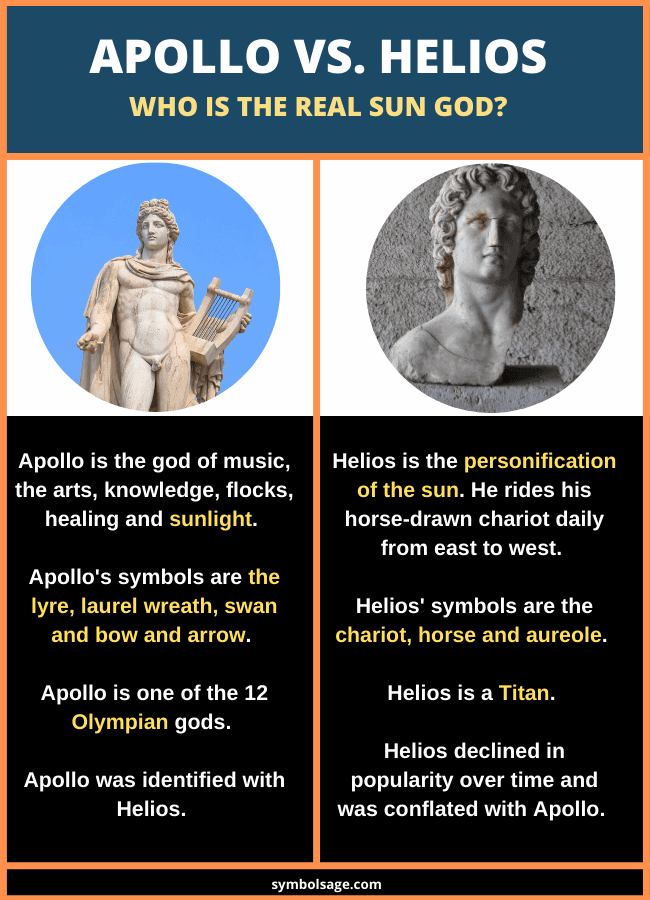
Many people think that Apollo and Helios are the same god, however, this is a common misconception. The two gods are two different beings, with distinct origins who eventually becme conflated.
Helios was a Titan god and the personification of the sun, while Apollo was one of the Twelve Olympian deities and god of several domains including light, music, arts, archery, healing and poetry.
Helios was directly connected with the sun and controlled it with his golden chariot. He rode the chariot daily from east to west, bringing the sun and daylight with it. Apollo, on the other hand, was simply the god of light (and not specifically of the sun).
Helios was the original sun god but Apollo gradually replaced him. Due to this conflation, Apollo is sometimes described as riding the Sun Chariot across the sky, a role distinctly belonging to Helios.
Helios in Aesop’s Fables
Helios appears in the famous Aesop’s Fables, where he competes with the god of the north wind, Boreas. Both the gods wanted to make a passing traveler remove his clothing. Boreas blew and blew at the traveler but this only made him wrap his clothing around himself more tightly. Helios, however, made the traveler get warmer and warmer so that he willingly removed his clothing, making Helios the winner.
In Brief
As the god of the sun, Helios played an important role in ancient Greek mythology, known for riding the Sun Chariot across the sky each day. He was credited with keeping the world alive in this way. Although he was later overshadowed (no pun intended) by Apollo, he remains the most well-known sun god of the Greek pantheon.








